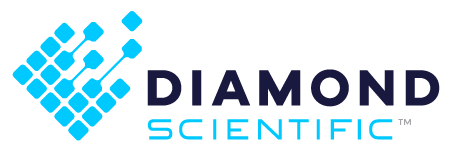Call Us
News
Methane Generation From Farm Waste

Lets face it, farm animals generate a ton of waste -- waste that could in fact be recycled to produce energy and fertilizer, offering a second stream of income to a struggling farming enterprize. In the following series of articles we will explore how methane is generated; discuss the design — and some of the associated problems — of digester systems suitable for use on farms; and provide resources on how to determine the potential for implementing digester technology for use on your own farm.
Reference: Methane Generation from Livestock Waste, Purdue University Cooperative Extension Service. Diamond Scientific is constantly seeking opportunities and products that will contribute to a better world. By providing equipment that will offer environmental benefits, as well as cost benefits to those pursuing alternative energy solutions, we hope to do our bit to lessen the impact of energy production on our environment and climate. “Protecting people, animals, plants, and minerals by offering solutions to reverse global warming.â€
What is Natural Gas?
Natural gas is composed primarily of methane (95-98%), which is extracted from deep underground deposits for its commercial value. Methane forms in wetlands and marshy areas over millions of years as a result of biological action by anaerobic bacteria, which release methane as they go about their business of breaking down organic matter within the soil.Methane From Organic Waste
Humans have taken advantage of this natural process by developing technology that is able to convert organic matter present in livestock manure and other farm waste into methane within a closed environment that is devoid of oxygen. However, because fossil fuels such as petroleum have been abundant and relatively cheap, extracting energy from livestock waste has not been extensively explored in the USA. But this is now changing; partly due to rising energy costs and growing pressure to reduce greenhouse gas emissions, and partly due to farmers experiencing lower profit margins, forcing them to search for an additional income stream to increase profitability. Digested technology has improved dramatically in recent years, and as a result, many livestock farmers are reassessing the viability of installing on-site digesters to generate methane from livestock manure and farm waste on their farms.Pros & Cons of On-site Methane Generation
There are both advantages and disadvantages associated with generating methane on-site, and these need to be considered when determining the potential of onsite methane production.Pros:
- A valuable end-product is produced, offering an additional income stream.
- The odor of digested livestock manure is substantially reduced.
- While the nutritional value of digested waste may be lower, nutrients in digested waste are freely available and more readily absorbed by plants.
Cons:
- A digester is expensive — it needs to be air-tight, well insulated, and have a heating source, which raises the costs.
- A digester is large — conventional digesters are typically up to 20 times larger than the daily volume of waste produced, and even larger if the waste is diluted beforehand. If diluted, disposal of both waste and wastewater needs to be considered.
- A digester needs to be closely managed to ensure efficiency. Any environmental changes can upset biological actions taking place within the digester, resulting in a slower methane production — or no methane production at all — which can take months to rectify.
- Initial startup is difficult — it takes a number of weeks to build up a large colony of methane-producing bacteria as they are slow growing and their numbers increase over time.
- Methane gas poses problems in terms of storage as it cannot be liquefied unless expensive specialized equipment is on hand.
- Methane is a flammable gas that is highly explosive when exposed to air.
The Methane Generation Process
Methane generation occurs as a result of anaerobic digestion of organic matter by methane forming bacteria. The gas formed inside an on-site methane digester typically consists of around 65% methane, with the balance consisting of carbon dioxide together with trace amounts of other organic gases. For methane generation to occur, there needs to be two key types of anaerobic bacteria present: 1) The ‘acid formers’ that convert the organic waste into organic acids; and 2) The ‘methane formers’ that subsequently convert the organic acids produced by the acid formers into methane and carbon dioxide. Temperature is critical for optimizing methane production by the bacteria. Conventional methane digesters operate at temperatures of between 90-110F for optimal results. In the next article we will discuss the potential of generating methane from livestock waste, and also look at a few of the associated problems.Reference: Methane Generation from Livestock Waste, Purdue University Cooperative Extension Service. Diamond Scientific is constantly seeking opportunities and products that will contribute to a better world. By providing equipment that will offer environmental benefits, as well as cost benefits to those pursuing alternative energy solutions, we hope to do our bit to lessen the impact of energy production on our environment and climate. “Protecting people, animals, plants, and minerals by offering solutions to reverse global warming.â€
Featured Image by Ian Barbour, via Flickr


